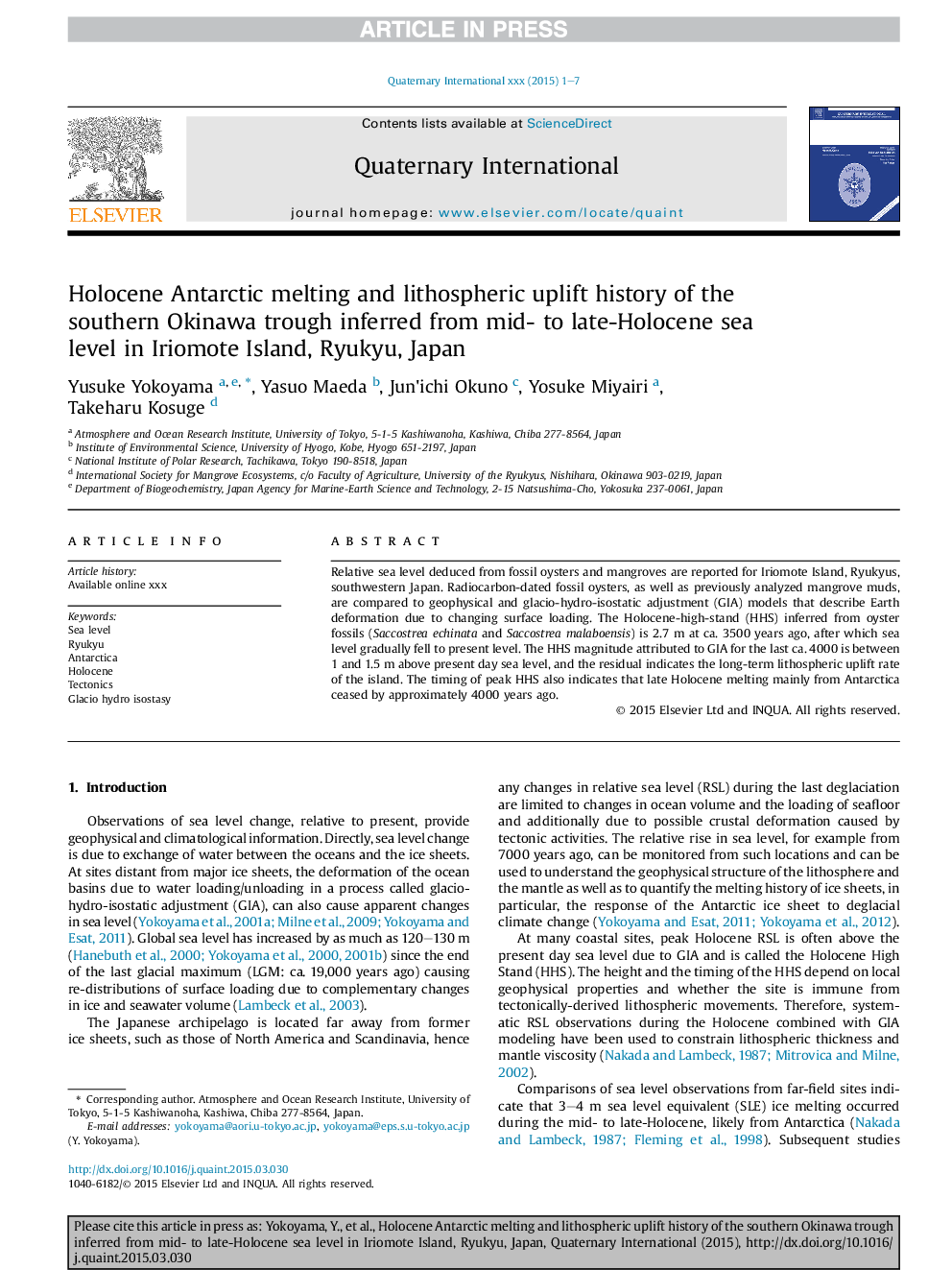| Article ID | Journal | Published Year | Pages | File Type |
|---|---|---|---|---|
| 7451374 | Quaternary International | 2016 | 7 Pages |
Abstract
Relative sea level deduced from fossil oysters and mangroves are reported for Iriomote Island, Ryukyus, southwestern Japan. Radiocarbon-dated fossil oysters, as well as previously analyzed mangrove muds, are compared to geophysical and glacio-hydro-isostatic adjustment (GIA) models that describe Earth deformation due to changing surface loading. The Holocene-high-stand (HHS) inferred from oyster fossils (Saccostrea echinata and Saccostrea malaboensis) is 2.7Â m at ca. 3500 years ago, after which sea level gradually fell to present level. The HHS magnitude attributed to GIA for the last ca. 4000 is between 1 and 1.5Â m above present day sea level, and the residual indicates the long-term lithospheric uplift rate of the island. The timing of peak HHS also indicates that late Holocene melting mainly from Antarctica ceased by approximately 4000 years ago.
Keywords
Related Topics
Physical Sciences and Engineering
Earth and Planetary Sciences
Geology
Authors
Yusuke Yokoyama, Yasuo Maeda, Jun'ichi Okuno, Yosuke Miyairi, Takeharu Kosuge,
